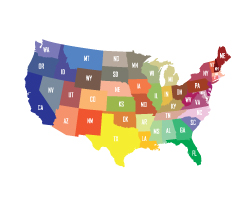Essential Facts: What Is a DUI Sentencing Grid?
A DUI sentencing grid is a standardized chart used by courts to determine appropriate penalties for drunk driving offenses. This systematic approach helps judges impose consistent sentences based on specific factors like blood alcohol content, prior convictions, and aggravating circumstances. The DUI sentencing grid ensures fairness while providing clear guidelines for both defendants and legal professionals navigating the criminal justice system.
Most states use some form of sentencing grid to streamline the legal process and reduce disparities in punishment. These grids typically organize penalties by offense severity and criminal history, creating a matrix that guides judicial decisions.
Legal Framework: How DUI Sentencing Grids Function
The DUI sentencing grid operates on a point-based system that evaluates multiple factors. Courts consider your blood alcohol concentration (BAC), number of previous DUI convictions, and whether aggravating factors existed during your arrest. Higher BAC levels, multiple offenses, and circumstances like accidents or minors in the vehicle increase penalty severity.
Key Elements: Primary Grid Components
Most DUI sentencing grids include these core elements:
- Offense Level: Categorizes the DUI based on BAC and circumstances
- Criminal History: Accounts for prior DUI convictions and related offenses
- Aggravating Factors: Considers accident involvement, property damage, or injuries
- Mitigating Circumstances: May reduce penalties for first-time offenders or cooperation
Step-by-Step: Reading Your Sentencing Grid
Courts follow a systematic process when consulting the DUI sentencing grid. First, they determine your offense level based on BAC and specific circumstances. Next, they evaluate your criminal history score using prior convictions. Finally, they locate the intersection on the grid to find the recommended sentence range.
Penalty Structure: Common DUI Sentencing Grid Consequences
The DUI sentencing grid typically prescribes escalating penalties for repeat offenses. First-time DUI convictions often result in fines, license suspension, and possible jail time. Second offenses carry mandatory minimums, while third DUI convictions may trigger felony charges with substantial prison sentences.
Expert Insight: Factors That Increase Penalties
Several circumstances can elevate your position on the DUI sentencing grid:
- BAC levels exceeding 0.15% (high BAC enhancement)
- Causing bodily injury or property damage
- Having passengers under 16 years old
- Driving on a suspended license
- Refusing chemical testing
Pro Tip: Understanding Presumptive Sentences
The sentencing guidelines provide presumptive penalties based on offense severity, meaning judges typically impose penalties within the recommended range. However, exceptional circumstances may justify departures from grid recommendations. Your attorney can argue for mitigating factors that might reduce penalties below grid minimums.
Defense Strategy: Challenging DUI Sentencing Grid Placement
Experienced DUI attorneys understand how to navigate the sentencing grid effectively. They may challenge the accuracy of BAC readings, question the validity of prior convictions, or present evidence of exceptional circumstances warranting departure from grid recommendations.
Quick Tip: Importance of Legal Representation
Having skilled egal counsel significantly impacts your sentencing outcome. Attorneys can identify procedural errors, negotiate plea agreements, or argue for alternative sentencing options like diversion programs or treatment courts.
Final Analysis: Is the DUI Sentencing Grid Fair?
The DUI sentencing grid promotes consistency and transparency in drunk driving cases. While it standardizes penalties, the system allows judicial discretion for exceptional circumstances. Understanding how the grid works empowers defendants to make informed decisions about their legal options and potential outcomes.
Next Step: Get Professional DUI Sentencing Grid Guidance
Navigating DUI sentencing guidelines can be complex and overwhelming, especially when facing potential penalties that could impact your future. It’s important to have legal representation during this challenging legal process. An experienced DUI defense attorney who understands your state’s specific sentencing guidelines and legal procedures can help you navigate the legal process.
If you’re searching for qualified legal representation, visit DUI Lawyer to connect with experienced DUI attorneys in your area. A skilled defense lawyer can analyze the specifics of your case, identify potential issues, and develop a comprehensive defense strategy tailored to your unique circumstances.
If you are an attorney looking for DUI leads, you can visit LegalBrandMarketing for exclusive DUI leads for defense lawyers and connect with High-Intent DUI Clients Seeking Legal Representation.
Frequently Asked Questions
1. How Does Prior Criminal History Affect DUI Sentencing?
Prior DUI convictions significantly increase penalties on the sentencing grid. Multiple offenses can escalate charges from misdemeanors to felonies with mandatory prison time.
2. Can Judges Deviate From DUI Sentencing Guidelines?
Yes, judges may depart from grid recommendations for exceptional circumstances, though they must provide written justification for sentences outside the presumptive range.
3. What’s the Difference Between Presumptive and Mandatory Sentences?
Presumptive sentences are recommended ranges allowing judicial discretion, while mandatory sentences require specific minimum penalties without exception.
4. Do All States Use DUI Sentencing Grids?
Not all states use formal sentencing grids, but most have structured penalty frameworks that consider similar factors like BAC levels and criminal history.
5. When Should I Accept a Plea Deal?
Consider plea agreements when the evidence is strong and the offered sentence falls below your likely grid penalty, but always consult with qualified legal counsel first.
Key Takeaways
- Court Tool: DUI sentencing grids standardize penalties across similar cases
- Factor-Based: BAC levels, prior convictions, and aggravating circumstances determine placement
- Escalating Penalties: Repeat offenses trigger increasingly severe consequences
- Judicial Discretion: Courts can deviate from grid recommendations for exceptional circumstances
- Legal Necessity: Professional representation is crucial for optimal sentencing outcomes








